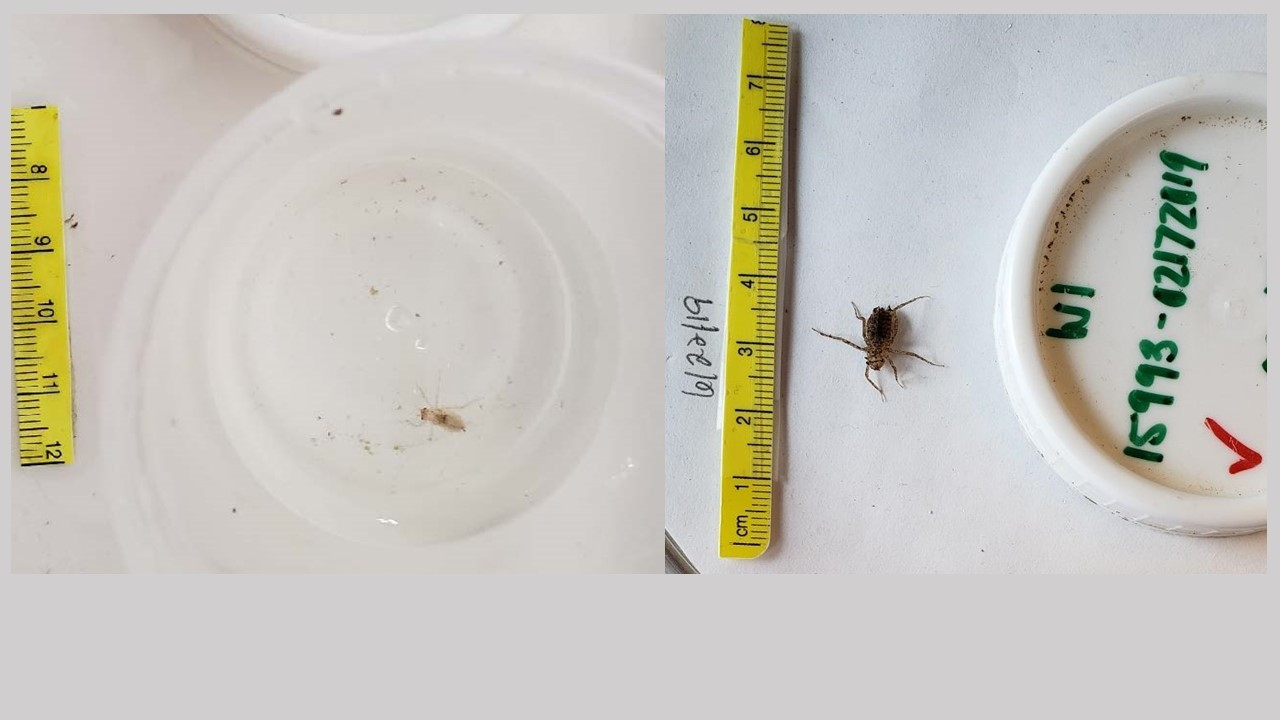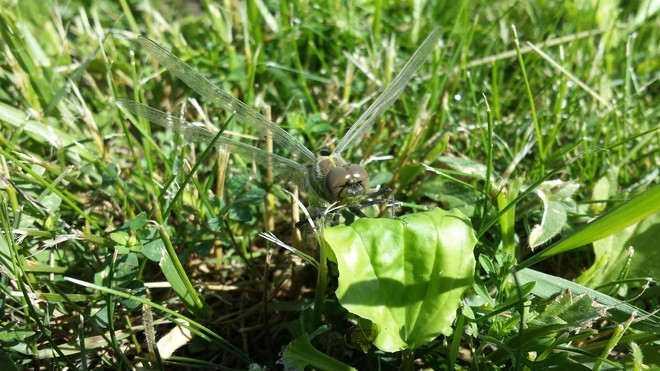
Hines Emerald Dragonfly larvae have been growing rapidly on station. May 30 arrival (left) and (right) just 23 days later. Credit: Angela Baran Dagandesh, USFWS
BY ANGELA BARAN DAGENDESH, GENOA NFH
Summer is here and the Hine’s emerald dragonfly larvae arrived on station May 30th, hand delivered by the University of South Dakota (USD) staff and students attending the Captive Rearing and Augmentation Work Group meeting at Genoa National Fish Hatchery, (NFH). Genoa NFH began working with the dragonflies in 2015 after receiving funds through the Cooperative Recovery Initiative Grant, allowing the station to purchase equipment, build a mobile rearing unit and hire temporary staff. Over the last four years, the program has grown to include the Forest Preserve District of DuPage County, Brookfield Zoo and the Illinois Department of Natural Resources. This working group has established restored habitat in some of the Forest Preserves as well as creating new captive rearing locations, allowing increased production. Through the collaborative process, all parties are beginning to share information about new rearing techniques or how they have handled any complications so the program as a whole is growing and the larvae are receiving the best care possible.
This summer the station received larvae on May 30th and placed them into cages in the mobile rearing unit on May 31st. This mobile rearing unit allows the larvae to be in a highly visible tank to monitor the small larvae closely during the first couple weeks on station as well as serving as a temporary quarantine facility, keeping the larvae in an isolated water source. The mobile unit was designed to use pond water, drawing from the pump station it is located next to. This source water coming from the ponds is full of natural food sources for the larvae, teeming with zooplankton to eat and is also at the ideal rearing temperature for the larvae. Water conditions were ideal early summer and the larvae grew enough to be moved to larger cages out in one of the hatchery ponds on June 22, 2019. The cages will be checked periodically throughout the summer to monitor the larval growth and the ponds are monitored daily for oxygen levels and temperature. At the end of the summer, the larvae will be weighed and measured again and then transferred back to USD for final larval growth and eventual emergence in 2020.

Endangered Hines Emerald Dragonfly. Credit: USFWS
